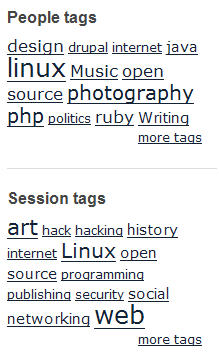This week two emails hit my Inbox within hours of each other. The first was from the site selling Radiohead’s latest CD via download. It was confirming my order, with a specific price tag that was more of a surprise to them than me, since it was I who chose it a few minutes earlier, during the ordering process.
News on the street, and from Radiohead management, is that tens of thousands of others played the same “Name your price for this CD” game, at a level equating to a little more than $8 US. (11/9/07 Update: The real figure appears to be only half of that $8 estimate.) Not too shabby — especially since there was no DRM (anti-pirating protection) on the downloads, and the band was basically doing the digital equivalent of busking: Opening their guitar cases to collect whatever money listeners want to throw their way. (They also sell a fixed-price, $80 “Disk Box” for Radiohead completists.)
The second email was from a small, audacious music store site that announced it was closing shop. FakeScience.com is a source I’ve enjoyed for fun, mostly ambient electronica.
At $5 an album, their DJ artists — with names like Dr Toast — provide perfect musical soundtracks to knowledge working and long drives. Here is what the email from the gang at Fake Science had to say:
It is with a heavy heart that we must inform you that on November 1st, 2007 we will be closing the Fake Science Music Store. Fake Science was originally started as a labor of love by four friends who had an idea to help share music with people like you and has since grown into the online music resource it is today. However, we evaluated the amount of investment that it would take to keep the store running, as well as making necessary upgrades to keep the Fake Science standards high. We came to the realization that none of us could realistically keep the commitment due to the weight other important things in our lives, such as families, day jobs, and even other side projects.
This sounds like the explanation I’ve heard many times from musician friends, when they announce that their garage band is breaking up after graduation. The explanation is always sincere — and quite valid, considering the economics of music.
But doesn’t the long tail mean that everyone with talent has a shot at recording stardom, or at least economic viability?
Aside from “families, day jobs,” etc., what caused Fake Science to sink into the DRM-free equivalent of the prehistoric tar pits, while Radiohead’s experiment has — by all accounts and speculation — flourished? I believe economist and author Tyler Cowen nails it. He provides five reasons in his Marginal Revolution post:
- Radiohead is an indie cult band with extreme loyalties from its partisans and the possibility of attracting more such partisans by seeming “cool.”
- Radiohead peaks high on the charts (#3 for their last release, if I recall…) but I believe they sell the product pretty quickly and don’t have a long run at the top. Again, they’d like to widen their fan base.
- Radiohead’s gambit has reaped enormous publicity, but this won’t be the case next time.
- Many donors will give to a highly visible “cause of the month” (remember the outpouring of support for the tsunami victims?) but they won’t necessarily give on a regular basis.
- Radiohead probably has an especially high ratio of touring to CD and iTunes income; see #1. This scheme is a natural for them but not for Kelly Clarkson.
Do read the comments of this blog entry for some interesting clarifications and opposing views. Nonetheless, I think Cowen’s points are all valid.
What’s more, I’d like to add a #6 to the list. Another reason why struggling artists won’t be reaping the benefits of this Radiohead “donor” experiment is what I’ll call The Prius Factor. A recent New York Times article points out that part of the tremendous success of the Toyota Prius hybrid is that it was built to be nothing but a hybid. This is in stark contrast to the major hybrid offerings by Ford, Honda and GM’s Saturn, where they started as traditional internal combustion vehicles. You have to look for a small badge on the trunk or side panel to know that any of these other cars is an environmentally friendly gas/electric hybrid.
That suggests, according to the article, that the Prius has become an “issue bracelet.” It’s a theory supported by research reported in the same Times piece:
… More than half of the Prius buyers surveyed this spring by CNW Marketing Research of Bandon, Ore., said the main reason they purchased their car was that “it makes a statement about me.”
In the weeks to come, people will be hearing songs from Radiohead’s (quite good) In Rainbows. Those who are fans will undoubtedly be asking the person playing this CD: “So what did you pay?” Like the overtly hybrid Prius, it’s an easy conversation-starter. Surely, Radiohead’s CD will be the catalyst for many a new friendship or hook-up.
This is bad news for the relatively unknown Dr Toast, and other Fake Science musicians. But there is hope that this business model could quickly morph to benefit all artists, given the accelerated Darwinian ecosystem of the internet. (And according to a fun NOFX song, dinosaurs will die).
Oh, and there is one final thing Tyler Cowen nails in his assessment: Kid A truly is Radiohead’s best album so far. Which just goes to show that even respected economists can’t resist sounding cool with a little musical name-dropping.
 It was stimulating to experience the free-form workshops, and exciting to imagine what this event will grow into with a few more years of publicity and support.
It was stimulating to experience the free-form workshops, and exciting to imagine what this event will grow into with a few more years of publicity and support.